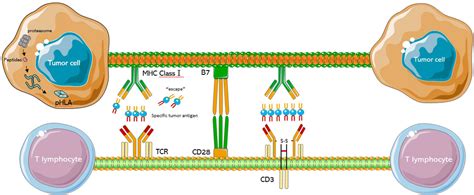Introduction to TCR
Terminations Control Reflections, commonly known as TCR, is a technique used in electrical engineering to reduce signal reflections and improve signal integrity in high-speed digital systems. TCR involves carefully designing the terminations at the end of transmission lines to match the characteristic impedance of the line, thereby minimizing reflections and ensuring clean, undistorted signal propagation.
In today’s world of ever-increasing data rates and system speeds, TCR has become an essential tool for designers working on high-speed digital interfaces such as DDR memory, PCIe, USB, and Ethernet. By properly implementing TCR, engineers can achieve reliable, error-free data transmission, even in the face of challenges such as long trace lengths, multiple loads, and impedance discontinuities.
Benefits of TCR
There are several key benefits to using TCR in high-speed digital designs:
- Improved Signal Integrity
- Reduced Reflections and Ringing
- Increased Timing Margin
- Better EMC Performance
- Enhanced System Reliability
By minimizing reflections and ensuring clean signal propagation, TCR helps to maintain signal integrity and reduce the likelihood of data errors. This translates to improved system reliability and performance, especially in applications where data integrity is critical, such as financial transactions, medical devices, and automotive systems.
Understanding Transmission Line Theory
To effectively implement TCR, it is essential to have a solid understanding of transmission line theory. A transmission line is a electrical conductor or waveguide designed to carry alternating current of radio frequency, that is, currents with a frequency high enough that their wave nature must be taken into account.
Characteristic Impedance
One of the key concepts in transmission line theory is characteristic impedance, often denoted as Z0. The characteristic impedance of a transmission line is determined by its physical properties, such as the conductor geometry, dielectric material, and spacing between conductors. For a uniform transmission line, the characteristic impedance is given by:
Z0 = √(L/C)
Where:
– L is the inductance per unit length
– C is the capacitance per unit length
Matching the characteristic impedance of the transmission line is crucial for preventing reflections and ensuring proper signal propagation. When a signal encounters a change in impedance, such as at the end of a transmission line or at a connector, a portion of the signal will be reflected back towards the source. These reflections can cause signal distortion, ringing, and other issues that degrade signal integrity.
Reflection Coefficient
The reflection coefficient, denoted as Γ (Gamma), is a measure of the amount of signal reflection that occurs when a signal encounters an impedance mismatch. The reflection coefficient is defined as:
Γ = (ZL – Z0) / (ZL + Z0)
Where:
– ZL is the load impedance
– Z0 is the characteristic impedance of the transmission line
A reflection coefficient of 0 indicates a perfect match between the load impedance and the characteristic impedance, resulting in no reflections. A reflection coefficient of +1 indicates a complete positive reflection, while a reflection coefficient of -1 indicates a complete negative reflection.

Termination Techniques
To minimize reflections and ensure proper signal propagation, it is necessary to terminate transmission lines with an impedance that matches the characteristic impedance of the line. There are several common termination techniques used in high-speed digital designs:
Series Termination
Series termination involves placing a resistor in series with the signal source, with the value of the resistor chosen to match the characteristic impedance of the transmission line. This technique is simple and effective for point-to-point connections, but it can be less suitable for multi-drop buses or long transmission lines.
| Advantages | Disadvantages |
|---|---|
| Simple implementation | Not suitable for multi-drop buses |
| Low power consumption | May require additional components |
| Suitable for short trace lengths | Can limit signal rise and fall times |
Parallel Termination
Parallel termination involves placing a resistor in parallel with the load, with the value of the resistor chosen to match the characteristic impedance of the transmission line. This technique is well-suited for multi-drop buses and longer transmission lines, as it provides a constant impedance match at the load end of the line.
| Advantages | Disadvantages |
|---|---|
| Suitable for multi-drop buses | Higher power consumption |
| Provides constant impedance match | May require additional components |
| Suitable for longer trace lengths | Can reduce signal amplitude |
AC Termination
AC termination is a variant of parallel termination that incorporates a capacitor in series with the termination resistor. This technique provides a high-impedance DC path, which can be useful for reducing power consumption in certain applications. However, AC termination can be more complex to design and may require additional components.
| Advantages | Disadvantages |
|---|---|
| Reduces power consumption | More complex design |
| Provides high-impedance DC path | May require additional components |
| Suitable for certain applications | Can affect signal rise and fall times |
Differential Termination
Differential termination is used in applications where signals are transmitted using differential pairs, such as in LVDS (Low-Voltage Differential Signaling) or CML (Current-Mode Logic) interfaces. In this case, termination resistors are placed between the positive and negative lines of the differential pair, with the value of the resistors chosen to match the differential impedance of the transmission line.
| Advantages | Disadvantages |
|---|---|
| Improves signal integrity | Requires differential signaling |
| Reduces common-mode noise | May require additional components |
| Suitable for high-speed interfaces | Can increase power consumption |

Designing with TCR
When designing high-speed digital systems with TCR, there are several key considerations to keep in mind:
Impedance Matching
Ensuring a proper match between the characteristic impedance of the transmission line and the termination impedance is crucial for minimizing reflections and maintaining signal integrity. This requires careful design of the PCB stackup, trace geometries, and material properties to achieve the desired characteristic impedance.
Signal Routing
Proper signal routing is essential for minimizing crosstalk, reducing EMI, and ensuring clean signal propagation. This involves techniques such as:
- Keeping signal traces as short as possible
- Avoiding sharp bends or discontinuities in signal traces
- Providing adequate spacing between signal traces and other conductors
- Using ground planes to provide a low-impedance return path
Simulation and Modeling
To optimize TCR design and verify signal integrity, it is often necessary to perform simulations and modeling of the high-speed digital system. This can involve using tools such as:
- SPICE (Simulation Program with Integrated Circuit Emphasis) for circuit-level simulations
- 3D EM (Electromagnetic) simulators for analyzing complex PCB geometries and structures
- IBIS (Input/Output Buffer Information Specification) models for simulating the behavior of IC buffers and packages
By combining careful design, simulation, and modeling, engineers can develop high-speed digital systems that achieve reliable, error-free data transmission using TCR.

FAQ
1. What is the main purpose of TCR?
The main purpose of Terminations Control Reflections (TCR) is to minimize signal reflections and improve signal integrity in high-speed digital systems by matching the termination impedance to the characteristic impedance of the transmission line.
2. What is characteristic impedance, and why is it important?
Characteristic impedance (Z0) is a property of a transmission line that depends on its physical characteristics, such as conductor geometry, dielectric material, and spacing. Matching the termination impedance to the characteristic impedance is crucial for preventing reflections and ensuring proper signal propagation.
3. What are some common termination techniques used in TCR?
Common termination techniques used in TCR include:
– Series termination
– Parallel termination
– AC termination
– Differential termination
4. How can I determine the characteristic impedance of a transmission line?
The characteristic impedance of a transmission line can be determined by its physical properties, such as conductor geometry, dielectric material, and spacing. It is given by the formula Z0 = √(L/C), where L is the inductance per unit length and C is the capacitance per unit length. PCB design tools and calculators can help in determining the characteristic impedance based on the design parameters.
5. What are some key considerations when designing high-speed digital systems with TCR?
When designing high-speed digital systems with TCR, some key considerations include:
– Ensuring proper impedance matching between the transmission line and termination impedance
– Proper signal routing to minimize crosstalk, reduce EMI, and ensure clean signal propagation
– Utilizing simulation and modeling tools to optimize TCR design and verify signal integrity
Conclusion
Terminations Control Reflections (TCR) is a critical technique for ensuring signal integrity and reliable data transmission in high-speed digital systems. By carefully designing terminations to match the characteristic impedance of transmission lines, engineers can minimize reflections, reduce signal distortion, and improve overall system performance.
To effectively implement TCR, a solid understanding of transmission line theory, impedance matching, and various termination techniques is essential. Additionally, proper PCB design, signal routing, and the use of simulation and modeling tools play crucial roles in optimizing TCR and achieving the desired signal integrity.
As data rates and system speeds continue to increase, the importance of TCR will only grow. By mastering the principles and techniques of TCR, engineers can design high-speed digital systems that push the boundaries of performance while maintaining reliable, error-free operation.

No responses yet